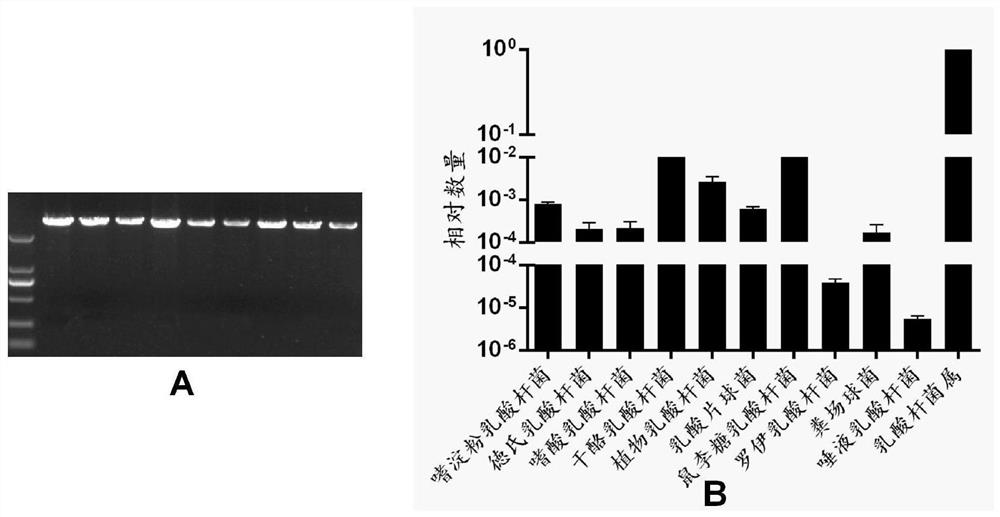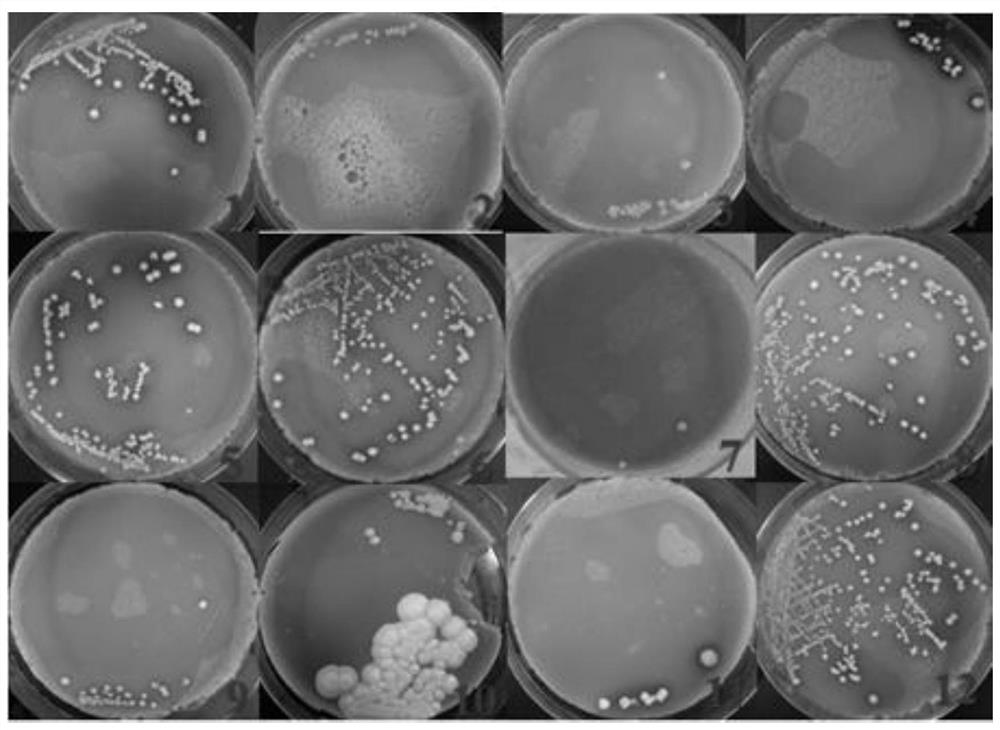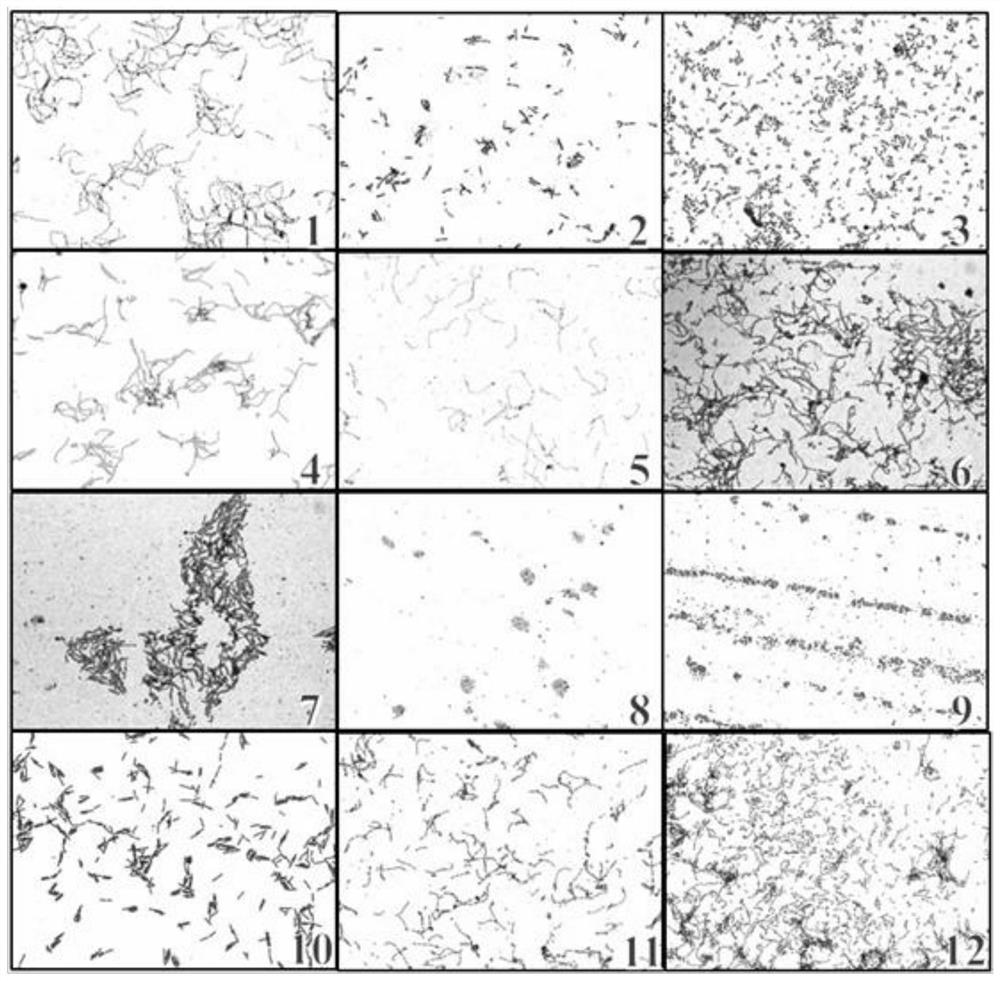Three kinds of lactic acid bacteria or their combination and their application in the preparation of silage
A technology of silage and lactic acid bacteria, which is applied in the application field of preparing silage, can solve the problems of lack, aerobic microbial contamination, shortened storage period, etc., and achieve the goal of increasing lactic acid content, increasing glucose level, and improving silage quality Effect
- Summary
- Abstract
- Description
- Claims
- Application Information
AI Technical Summary
Problems solved by technology
Method used
Image
Examples
Embodiment 1
[0044] Example 1 Development of high-efficiency grass bean forage green micro-storage additive bacterial agent
[0045] 1 Real-time fluorescence quantitative PCR analysis of dominant lactic acid bacteria in yak rumen
[0046] Bacterial genomic DNA from yak rumen contents was extracted according to the instructions of OMEGA Stool DNA Kit, DNA concentration and purity were measured by NanoDrop 1000 nucleic acid quantifier, and stored at -20 figure 1 .A). Using the bacterial genomic DNA of the rumen content as a template, using species-specific primers (Table 1), and using the 16S rRNA gene of Lactobacillus as an internal reference, real-time fluorescent quantitative PCR amplification analysis was performed (see Table 2 for the reaction system and conditions), and recorded Cyclic Ct value, according to 2 -△△Ct method calculates relative quantities. the result shows( figure 1 .B): Compared with the total number of Lactobacillus, the number of Lactobacillus rhamnosus in yak was...
Embodiment 2
[0093] Example 2 Application of 3 strains of lactic acid bacteria in the mixed storage pasture of whole plant corn and arrowhead pea
[0094] 1 Experimental design
[0095] Using 50% whole plant corn + 50% arrowhead pea as raw materials, add the screened single strain and the mixture of three strains to study the effect of silage (CK group (control group): do not add any bacterial agents, add the corresponding MRS liquid Culture medium; test group I: add WL10 strain, the addition amount is 3×10 5 CFU / g fresh grass; test group II: add WL11 strain, the addition amount is 3×10 5 CFU / g fresh grass; test group III: add WL8 strain, the addition amount is 3×10 5 CFU / g fresh grass; test group IV: add WL10, WL11 and WL8 strains respectively, and the addition amount is 1×10 5 CFU / g fresh grass, table 8), carry out the determination of each index respectively in 1, 3, 7, 20, 40, 60 days after silage.
[0096] Table 8 Introduction to test groups
[0097]
[0098] 2 Results and Ana...
Embodiment 3
[0123] Example 3 Application of 3 strains of lactic acid bacteria in the mixed storage of pasture grass with whole plant corn and vetch
[0124] 1 Experimental design
[0125] Using 50% whole plant corn + 50% vetch as raw materials, the test design is the same as in Example 1.
[0126] 2 Results and Analysis
[0127] (1) The effect of adding bacterial agents on the pH of pasture mixed with whole plant corn and vetch
[0128] Figure 15 As shown, on the 3rd day of silage, the silage pH of the 4 test groups was extremely significantly lower than that of the control group, and the test group I was significantly lower than the test group III; Significantly; for 40 days of silage, the silage pH of test group II was significantly lower than that of the control group and test group III, and the difference between the other groups was not significant; for 60 days of silage, the pH of silage of test group I was significantly lower than that of the control group, test group II and II...
PUM
 Login to View More
Login to View More Abstract
Description
Claims
Application Information
 Login to View More
Login to View More - R&D
- Intellectual Property
- Life Sciences
- Materials
- Tech Scout
- Unparalleled Data Quality
- Higher Quality Content
- 60% Fewer Hallucinations
Browse by: Latest US Patents, China's latest patents, Technical Efficacy Thesaurus, Application Domain, Technology Topic, Popular Technical Reports.
© 2025 PatSnap. All rights reserved.Legal|Privacy policy|Modern Slavery Act Transparency Statement|Sitemap|About US| Contact US: help@patsnap.com



